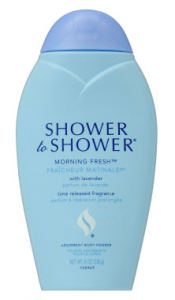New York Appellate Courts Clarify Defense-Friendly Standards on Causation
By Mohammad Haque, New York on August 1, 2022

Recently, New York’s highest court and the intermediary appellate court (Appellate Division: First Department) that hears all appeals arising from New York City’s Asbestos Litigation (“NYCAL”) have ruled that it is a plaintiff’s burden to present evidence of (1) what base line exposure is necessary to cause disease; and (2) that the exposure experienced from each product reached, or exceeded, that level sufficient to cause the disease. Furthermore, common assertions by plaintiff experts like “no safe dose” and “all asbestos is dangerous” were ruled not sufficient to meet this burden.
These were set out in decision of New York’s highest court, the Court of Appeals, in Nemeth, which set aside a jury verdict (and in which our firm submitted an amicus brief).
Although we have recognized that in any given case it may be “difficult, if not impossible, to quantify a plaintiff’s past exposure” to a toxin (Sean R., 26 NY3d at 812), our standard itself is not “impossible” for plaintiffs to meet (dissenting op at 25). We must, as always, strike a balance between the need to exclude “unreliable or speculative information” as to causation with our obligation to ensure that we have not set “an insurmountable standard that would effectively deprive toxic tort plaintiffs of their day in court” (Parker, 7 NY3d at 447). The requirement that plaintiff establish, using expert testimony based on generally accepted methodologies, sufficient exposure to a toxin to cause the claimed illness strikes the appropriate balance (see Cornell, 22 NY3d at 784). The fault here is not in our standard, but in plaintiff’s proof.
Nemeth v. Brenntag N. Am., No. 24, 2022 WL 1217464, at *1 (N.Y. Apr. 26, 2022)
In Olsen, the First Department set aside one of the most massive NYCAL jury awards to date: after remittitur, $15 million in compensatory damages and $105 million in punitive damages. The First Department held that plaintiffs failed, as a matter of law, to carry their burden to establish sufficient exposure to defendant’s talc product to cause plaintiff’s mesothelioma.
Even if it is assumed that plaintiffs presented sufficient evidence to support their mineral expert’s estimate of the amount of asbestos to which plaintiff Donna Olson was exposed each time she used J & J’s talcum powder products, plaintiffs’ medical expert never set forth a scientific expression of the minimum lifetime exposure to asbestos that would have been sufficient to cause mesothelioma, the disease in question.
Matter of New York City Asbestos Litig.(Olsen), No. 14875, 2022 WL 2812015, at *1 (1st Dept. 2022).
Olsen was the first NYCAL verdict overturned on appeal following Nemeth. However, the First Department did not stop there. It issued three more decisions clarifying and extending Nemeth to motions for summary judgment—contrary to the plaintiffs’ argument throughout New York that Nemeth applied only to post-verdict rulings.
All three cases involved claimants diagnosed with lung cancer who alleged asbestos exposure from Amtico floor tiles. The court confronted the same argument and experts on causation in each case.
In reversing the lower court’s denial of defendant’s motions for summary judgment, the First Department held that defendant made out a prima facie case that plaintiffs were not exposed to sufficient quantities of respirable asbestos from defendant’s product to cause their disease, based on a 2007 simulation study showing that cutting, scoring and disruption of its floor tile did not produce sufficient airborne asbestos above ambient levels to cause the disease.
The court held that plaintiffs failed to raise an issue of fact by failing to provide any quantification and merely arguing “no safe” levels:
Dr. Ginsburg generally concludes that “[t]here is no safe minimum level of exposure to asbestos with respect to lung cancer” and that “manipulation of asbestos containing floor tiles can result in release of asbestos fibers into the workers’ environment that are exponentially greater than the ambient level of exposure.” He also states that the asbestos process releases “visible dust” and that such dust is “certainly in dangerous concentration.” However, Nemeth holds that such broad pronouncements and conclusions will not satisfy a plaintiff’s causation burden, which is to show the levels of asbestos that the plaintiff was exposed to and that the levels are known to cause lung cancer. Likewise, to the extent Dr. Ginsberg’s [sic] conclusions are based upon the presence of visible dust emanating from an asbestos-containing product, this theory fails to satisfy a plaintiff’s burden on causation in asbestos cases. Id.
Dyer v. Amchem Prod. Inc., No. 13739, 2022 WL 2811995, at *1 (1st Dept. 2022).
The court rejected plaintiffs’ argument that defense-funded experiments invalidates their conclusions, particularly given that “[p]laintiff offered no expert to counter ABI’s calculation of decedent’s cumulative lifetime exposure, and thus no question of fact was raised as to its validity.” Killian v. A.C. & S., Inc., (Grunert), No. 114345/02, 2022 WL 2812016, at *1 (1st Dept. 2022). Although Dr. Ginsberg pointed to simulation studies measuring an average level of airborne asbestos as high as 0.27 f/cc from floor tile work, the court held that he did not provide any correlation between the asbestos fiber levels to which plaintiff may have been exposed and the amount of inhaled asbestos that would have caused decedent’s lung cancer. Pomponi v. A.O. Smith Water Prod. Co., No. 14982, 2022 WL 2811997, at *1 (1st Dept. 2022).
In each of these four cases, the First Department made clear that a plaintiff cannot establish his or her burden at trial or summary judgment (after defendant meets its initial prima facie burden), by relying on the generalized expert opinions that exposure to a toxin is “excessive” or “far more” than others and, therefore, sufficient to cause a disease. The court needs to be presented with actual quantification of the level of asbestos exposure need to cause the disease at issue and that plaintiff’s inhalation of asbestos from defendant’s product met or surpassed that level.

 Out of state plaintiffs flock to California courts to take advantage of its laws, including its more relaxed causation standard for asbestos injuries. However, a recent California appellate decision highlighted the fact a plaintiff may not evade the application of his own state’s causation standard when his asbestos exposure occurred entirely in that state – notwithstanding a California venue.1
Out of state plaintiffs flock to California courts to take advantage of its laws, including its more relaxed causation standard for asbestos injuries. However, a recent California appellate decision highlighted the fact a plaintiff may not evade the application of his own state’s causation standard when his asbestos exposure occurred entirely in that state – notwithstanding a California venue.1 The Advisory Committee on California Civil Jury Instructions is considering changes to many instructions, including two on causation: CACI 435 (substantial factor in
The Advisory Committee on California Civil Jury Instructions is considering changes to many instructions, including two on causation: CACI 435 (substantial factor in  When a Los Angeles jury returned an eye-popping $416 million verdict for plaintiff in a closely-watched talcum powder ovarian cancer case in 2017, the world took notice. The trial court granted post-trial motions that dramatically changed the jury’s verdict. Recently, in
When a Los Angeles jury returned an eye-popping $416 million verdict for plaintiff in a closely-watched talcum powder ovarian cancer case in 2017, the world took notice. The trial court granted post-trial motions that dramatically changed the jury’s verdict. Recently, in  On Sept. 5, 2018, an Illinois appellate court reversed a McLean County $4.6 million jury verdict against defendant Hobart Brothers Company on two grounds that offer hope to defendants in other cases. First, the court ruled that the defendant owed no duty to warn if defendant and the industry were unaware of a hazard in their asbestos-containing product at the time of plaintiff’s exposure, even if they were aware of the dangers of raw asbestos. Second, the court ruled that the mere presence of a defendant’s product at plaintiff’s workplace is insufficient evidence that the defendant’s product was a substantial cause of plaintiff’s mesothelioma.
On Sept. 5, 2018, an Illinois appellate court reversed a McLean County $4.6 million jury verdict against defendant Hobart Brothers Company on two grounds that offer hope to defendants in other cases. First, the court ruled that the defendant owed no duty to warn if defendant and the industry were unaware of a hazard in their asbestos-containing product at the time of plaintiff’s exposure, even if they were aware of the dangers of raw asbestos. Second, the court ruled that the mere presence of a defendant’s product at plaintiff’s workplace is insufficient evidence that the defendant’s product was a substantial cause of plaintiff’s mesothelioma. The defendant, a textile manufacturer in the late 60’s and early 70’s, produced dryer felts. Some felts contained asbestos that was released into the air during manufacture, at a facility where some of the pipes were insulated with material containing asbestos. Plaintiff was an outside sheet-metal contractor who worked at defendant’s facility on multiple occasions over a four-year period. Plaintiff was sometimes present when the manufacturing process was underway, worked in ventilation ducts that had collected dust, and on one occasion cut into pipe insulation and breathed that dust.
The defendant, a textile manufacturer in the late 60’s and early 70’s, produced dryer felts. Some felts contained asbestos that was released into the air during manufacture, at a facility where some of the pipes were insulated with material containing asbestos. Plaintiff was an outside sheet-metal contractor who worked at defendant’s facility on multiple occasions over a four-year period. Plaintiff was sometimes present when the manufacturing process was underway, worked in ventilation ducts that had collected dust, and on one occasion cut into pipe insulation and breathed that dust. Timothy Bostic’s relatives sued Georgia-Pacific and 39 other asbestos-related product manufacturers claiming that Bostic’s fatal mesothelioma was caused by exposure to their products. At trial in 2006, the jury allocated 25 percent of the causation to Knox Glass Co., the decedent’s former employer, and 75 percent to Georgia-Pacific. An amended judgment awarded plaintiffs over $11 million in compensatory and punitive damages. The Court of Appeals reversed the trial court’s decision holding that the plaintiffs failed to prove that the exposure to Georgia-Pacific’s asbestos was a substantial factor in bringing about Bostic’s death.
Timothy Bostic’s relatives sued Georgia-Pacific and 39 other asbestos-related product manufacturers claiming that Bostic’s fatal mesothelioma was caused by exposure to their products. At trial in 2006, the jury allocated 25 percent of the causation to Knox Glass Co., the decedent’s former employer, and 75 percent to Georgia-Pacific. An amended judgment awarded plaintiffs over $11 million in compensatory and punitive damages. The Court of Appeals reversed the trial court’s decision holding that the plaintiffs failed to prove that the exposure to Georgia-Pacific’s asbestos was a substantial factor in bringing about Bostic’s death.